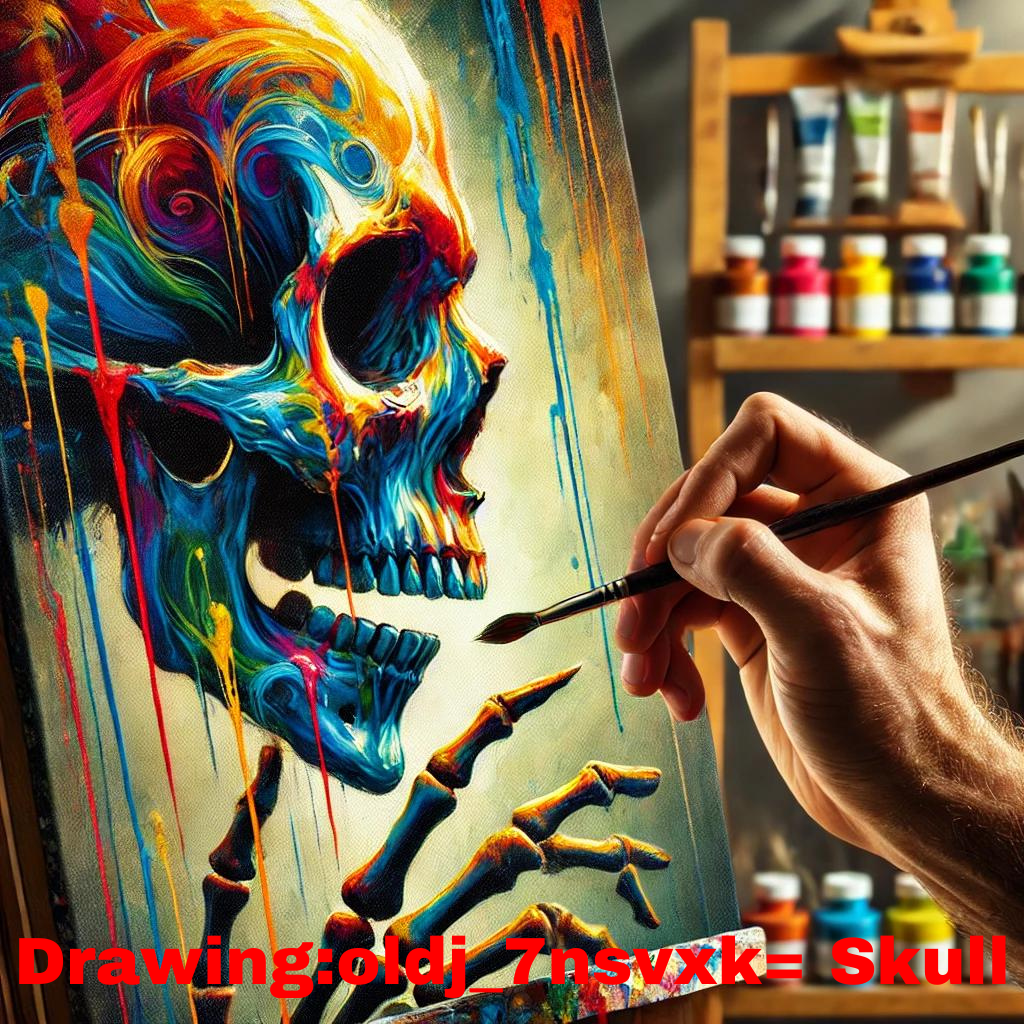Drawing skulls, a subject as timeless as art itself, offers an intriguing journey into the realm of anatomical illustration and creative expression. The skull, often associated with mortality and the macabre, also carries symbolic meanings of change and transformation in various cultures. This guide, “Drawing:oldj_7nsvxk= Skull,” aims to inspire artists to explore the captivating allure of skulls through different artistic techniques and interpretations. Whether you are a beginner eager to learn the basics or an experienced artist looking to delve into more complex forms, this exploration will help you expand your artistic repertoire and embrace the unique challenges posed by drawing skulls.
Understanding Drawing:oldj_7nsvxk= Skull Anatomy for Better Illustration
Before diving into the creative process, gaining a fundamental understanding of skull anatomy is crucial. Study different types of skulls—from human to animal—to appreciate the variations in structure and form. Resources such as medical textbooks, online anatomy databases, or even visits to museums can provide excellent references. Pay attention to the key features:
- The cranium (round upper part)
- The mandible (jawbone)
- Eye sockets
- Nasal opening
- Teeth arrangement
Techniques for Sketching Drawing:oldj_7nsvxk= Skull
To effectively draw skulls, start with simple sketches using basic geometric shapes. Here’s a step-by-step approach:
- Begin with an oval for the cranium and a box shape for the jaw.
- Lightly sketch guidelines to position the eye sockets, nasal cavity, and mouth.
- Gradually refine these shapes, adding details such as cheekbones and the temporal ridge.
- Use light strokes initially, allowing for easy adjustments as your drawing progresses.
Exploring Drawing:oldj_7nsvxk= Skull Styles: From Realistic to Stylized Interpretations
Skull drawings can range from hyper-realistic anatomical studies to stylized, abstract versions. Consider experimenting with various styles:
- Realistic: Focus on accurate details and shading to give depth and dimension.
- Abstract: Play with forms and exaggerate features to create a unique artistic expression.
- Fantasy: Incorporate elements such as flames, vines, or mechanical parts to blend the skull with imaginative themes.
Shading Techniques to Bring Skulls to Life
Shading is pivotal in transforming a flat sketch into a vivid depiction. Explore different shading techniques like cross-hatching, stippling, or smooth gradients to add shadows and highlights. These nuances enhance the skull’s realism or contribute to the mood of your composition.
Drawing:oldj_7nsvxk= Skull Digital Art and Mixed Media Innovations
With the advent of digital tools, artists can explore new horizons in skull drawing:
- Use graphic tablets to sketch and shade with precision.
- Experiment with textures and colors that are not typically achievable with traditional media.
- Combine digital elements with hand-drawn sketches for mixed media artwork.
Expanding Your Palette: Integrating Color into Drawing:oldj_7nsvxk= Skull
Incorporating Color for Emotional Impact
While traditional skull drawings often lean towards monochrome to emphasize the somber themes associated with skulls, introducing color can transform the mood and interpretation dramatically. Colors can convey emotions and bring a new dimension to your artwork:
- Reds can signify blood, life, or danger.
- Blues might suggest a calm, surreal, or ethereal presence.
- Greens could evoke decay or a connection to nature.
Experiment with watercolors, colored pencils, or digital tools to blend and contrast colors effectively. For instance, a skull with creeping green vines and flowers can symbolize life growing from death, providing a powerful visual metaphor.
The Power of Backgrounds: Setting the Scene for Drawing:oldj_7nsvxk= Skull Art
Creating Context with Environmental Elements
The background of your skull drawing can greatly enhance the overall composition and narrative. Whether you choose a simple shaded backdrop to highlight the skull or a detailed scene that tells a story, the environment plays a crucial role in framing and interpretation:
- Gothic settings with dark, intricate patterns can create a mysterious or foreboding atmosphere.
- Celestial backgrounds, featuring stars and nebulae, might suggest the universality of life and death.
- Abstract elements, like splashes of color or geometric shapes, can modernize the skull and give it a more avant-garde feel.
Experimenting with different contexts can help you find the best way to express the themes you wish to explore in your skull drawings, making each piece uniquely reflective of its intended mood or message.
Reflecting Personality: Customizing Skulls with Unique Traits
Personal Touches That Make Each Skull Stand Out
Adding personal touches to skull drawings can turn a generic subject into a captivating character. Consider these additions to bring individuality and flair to your skulls:
- Accessories: Hats, glasses, or headphones can give skulls a quirky or contemporary look.
- Facial expressions: Modify the jawline or teeth to give the skull a smile, frown, or sneer, infusing emotion into the bone structure.
- Cultural motifs: Incorporate designs or patterns specific to a culture, such as tribal markings or historical armor, to give the skull a backstory or heritage.
These elements not only enrich the visual appeal of your drawings but also create opportunities for storytelling within your art. Each addition can spark a viewer’s curiosity about the skull’s origins, purpose, or identity.
Final Thoughts: The Philosophical Depth of Drawing:oldj_7nsvxk= Skull Art
Exploring Deeper Meanings
Skull drawings do more than depict the anatomical remnants of a head; they can also serve as profound reflections on life, death, and human experience. As you develop your skills in drawing skulls, consider the larger philosophical questions that this subject invites you to explore:
- Transience of life: Skulls are often used as memento mori, reminders of the inevitability of death and the importance of living meaningfully.
- Cultural significance: In many cultures, skulls represent ancestors, memory, and protection from evil.
- Symbolic interpretations: Skulls can also symbolize resilience and change, as they last long after the softer, more vulnerable parts of the body have decayed.
By delving into these themes, your skull drawings can evolve from simple studies of form to complex expressions of cultural and existential significance, making each piece a conversation starter about deeper truths.
Conclusion
Drawing skulls is more than a practice in anatomy; it’s a celebration of artistic freedom and personal growth. Each skull you draw can be a reflection of your interpretations of life, death, and transformation. Keep exploring different mediums and styles to find what resonates with your artistic vision. “Drawing:oldj_7nsvxk= Skull” is not just about capturing form; it’s about capturing essence.
By following these guidelines and allowing your creativity to flow, you’ll not only improve your technical skills but also develop a deeper appreciation for one of art’s most profound subjects. Whether for artistic exploration or personal expression, the journey of mastering skull drawings promises a fulfilling path laden with discovery and innovation.

